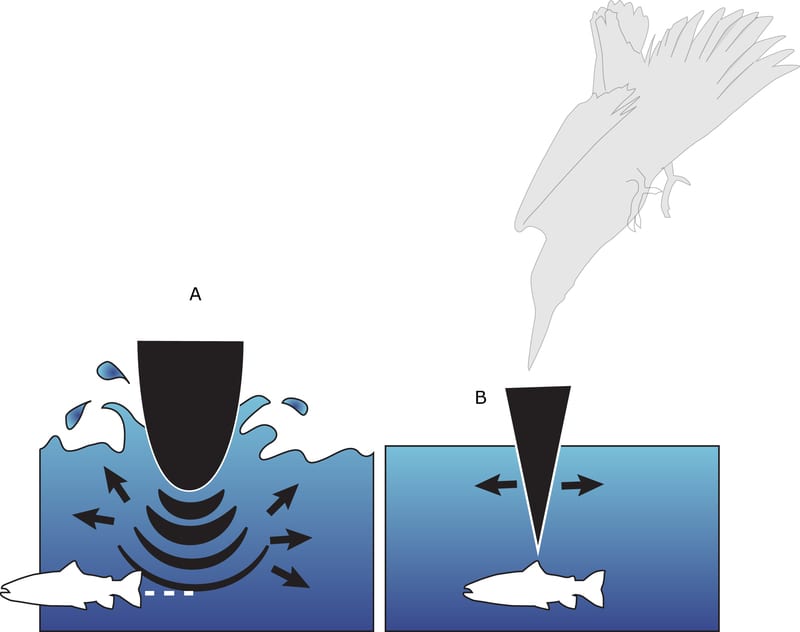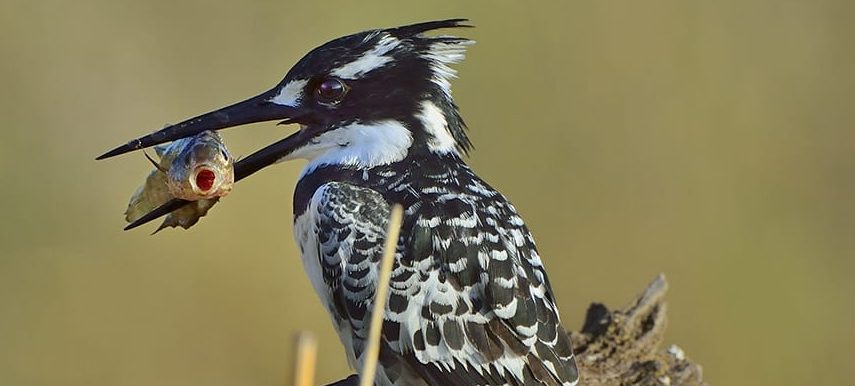The shape of the kingfisher beak allows it to dive into the water without splashing.
Introduction
While beside a creek, pond, or at the ocean, you may have been fortunate to spy a kingfisher. Found the world over, kingfishers are a family of birds containing over 100 species, often visiting bodies of water, where, as their name suggests, they are masters at catching fish.
The method kingfishers use to catch fish seems simple enough. Once a kingfisher spies a fish (using special glare-reducing cells in its eyes), it leaves a perch and plunges into the water to grab it in its beak. Fish, however, have a defensive strategy that is hard to overcome. Specialized receptors along a fish’s body, known as a lateral line, sense disturbances in the flow of surrounding water. Any sudden movement of water––such as a compression wave from a diving bird––and fish are gone with a flick of the tail. If you’ve ever tried to catch a fish with your hands, you know how difficult it is to escape their detection as soon as your hand touches the water.
So how does a kingfisher, hitting the water’s surface at over thirty-six feet (eleven meters) per second, manage to grab a fish in its beak before the fish detects it and flees?
"So how does a kingfisher, hitting the water’s surface at over thirty-six feet (eleven meters) per second, manage to grab a fish in its beak before the fish detects it and flees?"
The Strategy
The secret is in the shape of the kingfisher’s beak. A long and narrow cone, the kingfisher’s beak parts and enters the water without creating a compression wave below the surface or a noisy splash above. The fine point of the conical beak presents little surface area or resistance to the water upon entry, and the evenly and gradually enlarging cross-section of the beak keeps fluid flowing smoothly around it as it penetrates further into the water column. This buys the bird crucial milliseconds to reach the fish before the fish knows to flee. The length of the beak is critical here: the longer it is, the more gradually the angle of the wedge expands. A shorter, fatter, or rounder beak would increase the wedge angle, resulting in a splash, a compression wave, and a fleeing fish.
The Potential
Eiji Nakatsu, chief engineer of the company operating Japan’s fastest trains, wondered if the kingfisher’s beak might serve as a model for how to redesign trains not to create such a thunderous noise when leaving tunnels and breaking through the barrier of tunnel-air and outside-air. Sure enough, as his team tested different shapes for the front of the new train, the train became quieter and more efficient as the geometry of its nose became more like the shape of a kingfisher’s beak, requiring 15% less energy while traveling even faster than before.














